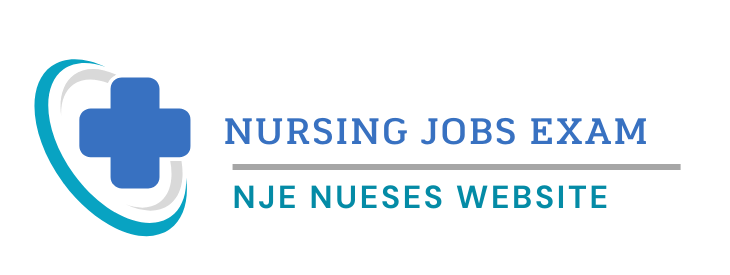Ceftriaxone Uses
Ceftriaxone: Treatment of susceptible infections due to gram-negative aerobic organisms, some gram-positive organisms, including respiratory tract, GU tract, skin and skin structure, bone and joint, intra-abdominal, pelvic inflammatory disease (PID), biliary tract/urinary tract infections; bacterial septicemia, meningitis, perioperative prophylaxis, acute bacterial otitis media.
OFF-LABEL: Complicated gonococcal infections, STDs, Lyme disease, salmonellosis, shigellosis, atypical community-acquired pneumonia.
Precautions of Ceftriaxone Administration
Contraindications: History of hypersensitivity/anaphylactic reaction to ceftriaxone, cephalosporins. Hyperbilirubinemic neonates, esp. premature infants, should not be treated with ceftriaxone (can displace bilirubin from its binding to serum albumin, causing bilirubin encephalopathy). Do not administer with calcium-containing IV solutions, including continuous calcium-containing infusion such as parenteral nutrition (in neonates) due to the risk of precipitation of ceftriaxone-calcium salt. Cautions: Hepatic impairment, history of GI disease (esp. ulcerative colitis, antibiotic-associated colitis). History of penicillin allergy.
Action of Ceftriaxone
Binds to bacterial cell membranes, inhibits cell wall synthesis. Therapeutic Effect: Bactericidal.

Pharmacokinetics of Ceftriaxone
Widely distributed, including to CSF. Protein binding: 83%–96%. Primarily excreted in urine. Not removed by hemodialysis. Half-life: IV: 4.3–4.6 hrs; IM: 5.8–8.7 hrs (increased in renal impairment).
Lifespan considerations of Ceftriaxone
Pregnancy/Lactation: Readily crosses placenta. Distributed in breast milk.
Children: May displace bilirubin from serum albumin. Contraindicated in hyperbilirubinemic neonates.
Elderly: Age-related renal impairment may require dosage adjustment.
Interactions of Ceftriaxone
DRUG: Probenecid may increase excretion. May increase aminoglycoside (e.g., gentamicin, tobramycin) concentration. HERBAL: None significant. FOOD: None known. LAB VALUES: May increase serum BUN, alkaline phosphatase, bilirubin, creatinine, LDH, ALT, AST. May cause positive direct/indirect Coombs’ test.
Availability (Rx) of Ceftriaxone
Injection, Powder for Reconstitution (Rocephin): 250 mg, 500 mg, 1 g, 2 g. Intravenous Solution (Rocephin): 1 g/50 mL, 2 g/50 mL.
Administration/handling of Ceftriaxone
IV
Reconstitution:
• Add 2.4 mL Sterile Water for Injection to each 250 mg to provide concentration of 100 mg/mL.
• May further dilute with 50–100 mL 0.9% NaCl, D5W.
Rate of Administration
1. For IV push, administer over 1–4 min (maximum concentration: 40 mg/mL).
2. For intermittent IV infusion (piggyback), infuse over 30 min.
Storage
• Solution appears light yellow to amber.
• IV infusion (piggyback) is stable for 2 days at room temperature, 10 days if refrigerated.
• Discard if precipitate forms.
IM
• Add 0.9 mL Sterile Water for Injection, 0.9% NaCl, D5W, or lidocaine to each 250 mg to provide concentration of 250 mg/mL.
• To minimize discomfort, inject deep IM slowly. Less painful if injected into gluteus maximus than lateral aspect of thigh.
IV incompatibilities of Ceftriaxone
Amphotericin B complex (Abelcet, AmBisome, Amphotec), famotidine (Pepcid), fluconazole (Diflucan), labetalol (Normodyne), vancomycin (Vancocin).
IV Compatibilities of Cetriaxone
DiltiaZEM (Cardizem), heparin, lidocaine, metroNIDAZOLE (Flagyl), morphine, propofol (Diprivan).
Indications/routes/dosage of ceftriaxone
Usual Dosage Range of Ceftriaxone
IM/IV: ADULTS, ELDERLY: 1–2 g q12–24h. CHILDREN: 50–100 mg/kg/day in 1–2 divided doses. Maximum: 4 g/day (meningitis), 2 g/day (other). NEONATES: 25–50 mg/kg/dose given once daily.
Dosage in Renal/Hepatic Impairment
Dosage modification is usually unnecessary, but hepatic/renal function test results should be monitored in pts with renal and hepatic impairment or severe renal impairment.
Side effects of Ceftriaxone
Frequent: Discomfort with IM administration, oral candidiasis (thrush), mild diarrhea, mild abdominal cramping, vaginal candidiasis. Occasional: Nausea, serum sickness–like reaction (fever, joint pain; usually occurs after second course of therapy and resolves after drug is discontinued). Rare: Allergic reaction (rash, pruritus, urticaria), thrombophlebitis (pain, redness, swelling at injection site).
Adverse effects/toxic reactions of Ceftriaxone
Antibiotic-associated colitis, other superinfections (abdominal cramps, severe watery diarrhea, fever) may result from altered bacterial balance in GI tract. Nephrotoxicity may occur, esp. in pts with preexisting renal disease. Pts with history of penicillin allergy are at increased risk for developing a severe hypersensitivity reaction (severe pruritus, angioedema, bronchospasm, anaphylaxis).
Nursing considerations of Administration of Ceftriaxone
Baseline assessment
Obtain CBC, renal function tests. Question for history of allergies, particularly cephalosporins, penicillins.
Intervention/evaluation
Assess oral cavity for white patches on mucous membranes, tongue (thrush). Monitor daily pattern of bowel activity, stool consistency. Mild GI effects may be tolerable (increasing severity may indicate onset of antibiotic-associated colitis). Monitor I&O, renal function tests for nephrotoxicity, CBC. Be alert for superinfection: fever, vomiting, diarrhea, anal/genital pruritus, oral mucosal changes (ulceration, pain, erythema).


